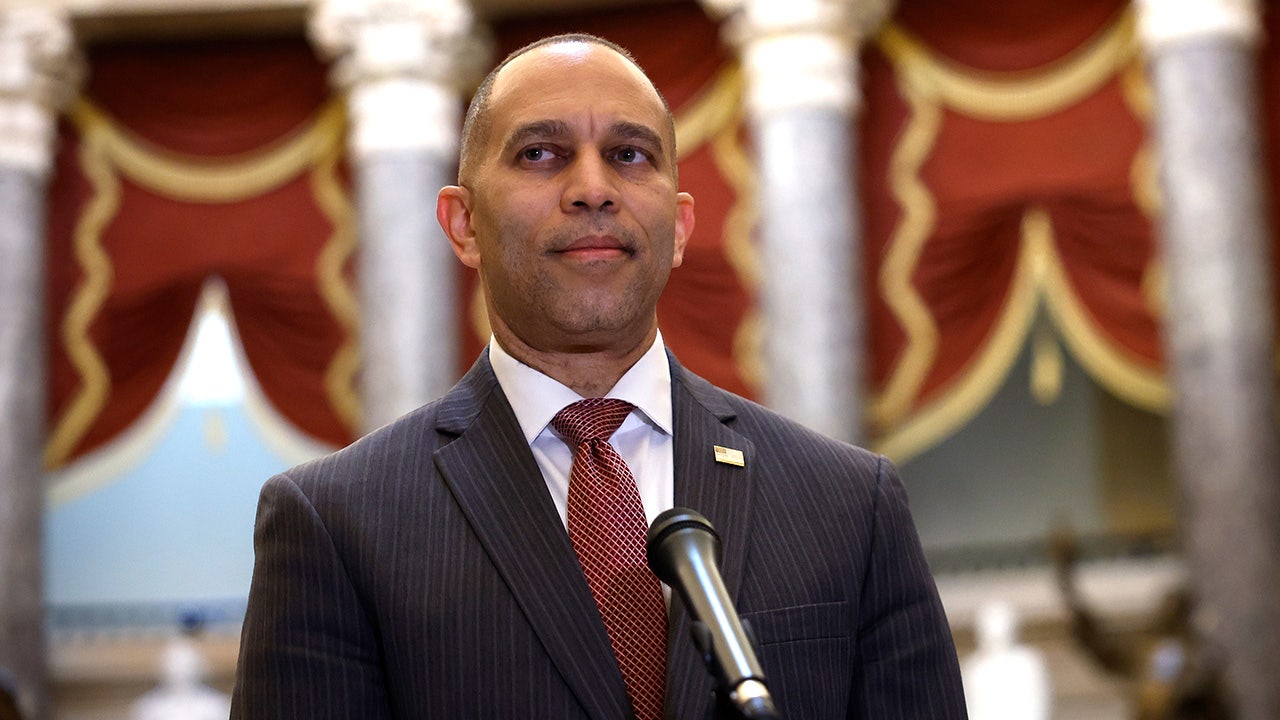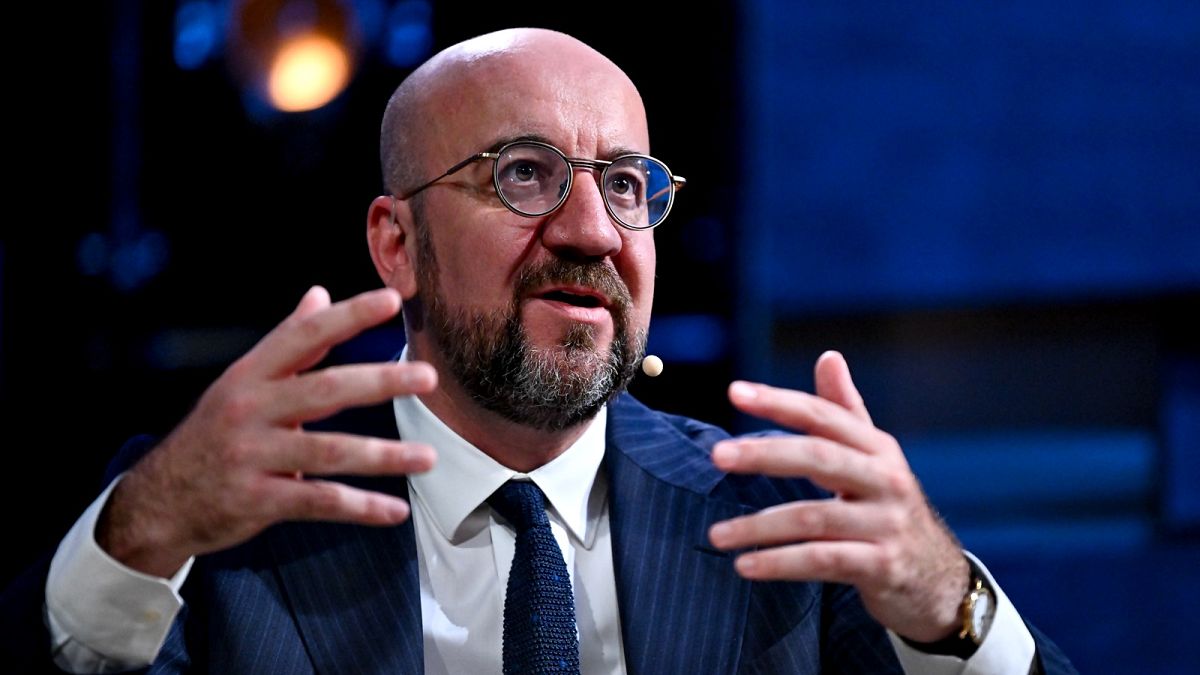Oregon
Takeaways: Oregon baseball goes 2-1 at Shriners Children’s College Showdown in Texas

Led by an impressive showing from its bullpen in its first two games, the Oregon baseball team won its season debut against Oklahoma on Friday, 4-2, then defeated Baylor 7-4, before falling to Texas Tech on Sunday, 11-7, all at the Shriners Children’s College Showdown at Globe Life Field in Texas.
The Ducks (2-1) new-look bullpen was on full display in its two openers, shutting the door on both the Sooners and Bears to take home victories before an inconsistent showing against the Red Raiders.
In their season opener against the Sooners the Ducks took an early 2-0 lead before Oklahoma tied it with two runs in the third. The teams traded scoreless innings until the Ducks finally broke through in the eighth, putting two runs across to earn the win.
Sacramento State transfer Jeffery Heard went 2-for-4 in his debut with a double, and Dominic Hellman had the lone RBI of the day. Starter RJ Gordon pitched 4 1/3 innings with three strikeouts and two earned runs. Grayson Grinsell pitched the next three scoreless innings with a punchout and just one hit allowed, and Michael Freund earned the save.
In their second game against Baylor, the Ducks fell into an early hole, trailing 4-0 heading into the bottom of the fourth. Oregon responded with a run in the bottom of the inning, and then back-to-back three-run innings in the fifth and sixth while the bullpen continued to deal.
Drew Smith went 2-for-5, Justin Cassella added a multi-hit day, going 2-for-3, and Heard continued his strong start with another 2-hit day and an RBI. Six Ducks had RBIs in a well-rounded day at the plate after a slow start. On the mound, transfer Kevin Seitter got the start and pitched four innings, allowing four runs with three earned on five hits.
Bradley Mullan earned the win out of the pen, pitching two scoreless innings with four punchouts. He, Jaxon Jordan and Logan Mercado combined to throw five scoreless with nine strikeouts, with Mercado earning the save.
In the Ducks finale against the Red Raiders, Oregon dug itself into too deep a hole, and stranded 13 on base in its first loss of the early season. At the plate, Smith continued his strong weekend, going 4-for-6 with three RBIs, and Carter Garate added a 4-for-4 line with a pair of doubles. Heard once again had a multi-hit day, going 2-for-5.
The Ducks were far less consistent on the mound Sunday, with six arms combining to allow 13 hits and 11 runs with 10 earned in eight innings pitched. Turner Spoljaric earned the start and only pitched an inning and a third, allowing five earned runs before getting yanked in the second inning. Freshman Toby Twist came out of the pen and pitched 3 2/3 innings, allowing just two runs and striking out six.
Oregon takes on Lafayette in its home-opening four-game series at PK Park starting on Friday.
Alec Dietz covers University of Oregon football, volleyball, women’s basketball and baseball for The Register-Guard. You may reach him at adietz@registerguard.com and you can follow him on Twitter @AlecDietz.

Oregon
Oregon’s got jobs, but could use workers to fill critical positions, according to new report

Oregon’s labor shortage is reflected at Gramma’s Corner Kitchen in Milwaukie, Ore., on May 9, 2021. The 2024 Oregon Talent Assessment reported that Oregon’s workforce shortage is severe, with about 66 people available to work for every 100 jobs posted in the state.
John Notarianni / OPB
Oregon has lots of jobs. In some ways, too many.
Jobs are especially abundant in Oregon’s healthcare, manufacturing and childcare industries. But the workforce to fill these jobs is lagging and employers — businesses, community organizations, higher education institutions and state agencies — will have to work together to shore up the state’s worker shortage.
Those are some of the key findings from the Oregon Talent Assessment, a biannual report released this week by the state’s Higher Education Coordinating Commission and the Workforce and Talent Development Board.
The report looked at four key industries that have the potential to lift the economic status of Oregonians: healthcare, information technology, construction and wood products manufacturing. It also singled out two jobs that are crucial to a well-oiled economy in Oregon: childcare workers and truck drivers.
Post-pandemic, Oregon’s economy is faring well, according to figures cited in the assessment. The state’s gross domestic product has increased by more than 30% over the last five years and employment grew by 7% from 2020 to 2023. That job growth is expected to increase by 10% over the next ten years.
“Oregon is well positioned when it comes to the labor market,” said Christiana McFarland with the nonprofit research firm SRI, which conducted the assessment. “Most people who want a job, have a job here in the State of Oregon.”
But this good news is tempered with the fact that the state’s current workforce is expected to shrink in coming years. One in four workers are set to retire over the next decade and a 30-year trend in population growth for Oregon ended in 2022.
The continued growth of the state’s economy is dependent on finding, training and retaining skilled workers. Providing periodic training opportunities for workers in information technology and semiconductor spaces is crucial, where technological advancements often outpace STEM programs and certifications. Retraining was also an identified need for Oregon’s trucking industry. Employers surveyed in this industry said balancing time away from a worker’s regular duties with training on new technologies, like lane assist or other semi-automatic safety features, was a challenge.
The assessment reported that Oregon’s workforce shortage is severe, with about 66 people available to work for every 100 jobs posted in the state. Labor shortages in certain industries and jobs are more significant than others. The state needs nearly 27,000 more healthcare workers to meet demand. Registered nurse was the most common position found on Oregon job boards. The report also found that part of the problem is a slow pipeline for healthcare workers due to Oregon’s own regulatory system, with a licensure process that is unusually burdensome for people seeking credentials.
Oregon needs nearly 3,000 more people to fill the demand for childcare workers, a job that is often underpaid. Workers in this job overwhelmingly identify as female and earn just over half of the average salary, $65,000, in Oregon. The lack of available childcare slots has a downstream effect on potential workers, by preventing parents of young children from entering the workforce.
The report offered several recommendations to ensure long-term success for Oregon’s economy and workforce including closer alignment between two big realms: the state’s workforce system, which includes private business leaders, state agencies and community organizations, and the state’s education system, meaning both K-12 and higher education.
The report also called for increased access to workforce opportunities for all Oregonians, something the state has already started doing through Future Ready Oregon, a $200 million investment from the state legislature in 2022. Creating an equitable workforce is the main goal behind the program, which seeks to increase living-wage job opportunities for women, BIPOC, LGBTQ+ and youth among other marginalized groups in the state.
“There are a number of programs and investments that the state is making to really drive workforce development, talent development into the future,” said McFarland. “The key to success for those programs is going to be the ability to adapt to the changing economy.”
Oregon
Oregon’s largest coastal earthquake drill held in Newport

LINCOLN , Ore. (KPTV) – On Wednesday, state and local leaders in Lincoln County gathered to give an inside look at how the state is poised for what they’re calling ‘Oregon’s largest coastal earthquake preparedness exercise.’
Representatives say a potential Cascadia earthquake could be catastrophic.
“The first 4 – 5 minutes 20,000 people can be gone. 250,000 to 300,000 the first three weeks because, think about it, slowly the bridges are gone. Transportation is gone. How to get food and shelter,” said state Rep. Paul Evans.
The event was made possible by funding from the Oregon Department of Human Services, state legislators, Lincoln County, and ODHS’ Oregon Department of Human Services Office of Resilience and Emergency Management.
A ‘dress rehearsal’ of what an emergency evacuation assembly point would look like after a seismic event was at the Newport Municpal Airport.
This evacuation point consists of multiple tents that can house up to 100 people for two weeks. Along with meals, showers, and a medical tent.
ODHA says this not just a shelter, but a transition place to help those with injuries, the elderly, or those who are ill.
“when a major event lands here, we’re gonna be looking at 100,000 people. Having the capacity here to assemble people and to move them to a safer local is going to be critically important,” said state Rep. David Gomberg.
At a cost of $500,000 a second location is placed at Tillamook Municipal Airport.
ODHA says being located at an airport makes it easy for people to go east for resources.
To ensure your family is quake-ready , Lincoln County says to have a ‘go-kit’ ready at home.
“Think about non-perishable food items. If that’s canned, you’re gonna want can opener. We encourage people to have comfort items for their kids and themselves medication,” said Emergency Manager Samantha Buckley.
State Rep. Gomberg had his own experience during a fire evacuation with his family. He says having a plan is critical.
“Part of that plan also has to be, where do you go? How do you communicate? How do you connect? Where do you gather and where do you go next?” said Gomberg. “If we didn’t have a plan that day, we wouldn’t have had the time we needed to save ourselves.”
A third location in Coquille is in progress, with hope for even more in the future.
Copyright 2024 KPTV-KPDX. All rights reserved.
Oregon
What’s the oldest bar in Oregon? Finding it was harder than you’d think
:quality(70)/cloudfront-us-east-1.images.arcpublishing.com/advancelocal/RDQUW4SCKZH33OZKIJIHBH3S3I.jpeg)
For as long as anyone can remember, the Rainbow Cafe in downtown Pendleton has made a unique claim to fame: The oldest bar in Oregon. It’s on the Rainbow’s menus, website and the T-shirts for sale at the bar.
Portlanders might disagree and point to Huber’s Café, founded in 1879 – but the Pendleton bar claims a key distinction. The Rainbow, its owners said, is the oldest continuously operating tavern location in the state, having served out of the same brick building since 1883. Huber’s moved buildings several times before landing at its current home in 1910.
But there’s at least one other bar that claims to have been founded in 1883 and never moved – the Pioneer Saloon in the tiny, southern Oregon town of Paisley.
Were there other saloons and taverns just as old across the state? I decided to investigate and determine which might actually be the oldest.
But first, a caveat: During the Prohibition years, alcohol sales were banned. In Oregon, statewide prohibition took effect in 1916 — three years before the ratification of the 18th Amendment made the entire country dry, until its repeal in 1933. During those years, these establishments didn’t close but continued as either restaurants, stores, or pool halls. (Could you still buy booze on the side? Very possibly.)
Other contenders
I put out a call on The Oregonian’s social media accounts, and readers suggested other historic bar locations throughout the state that might be the oldest. Most of these bars didn’t claim an earlier founding date than the 1880s. There’s Mac’s Place in Silverton (1890), the Imnaha Store and Tavern in eastern Oregon (1904) and Luckey’s in Eugene (1911). The Portway Tavern in Astoria says it’s the “oldest watering hole in the oldest settlement west of the Rockies,” and while Astoria was founded in 1811, the tavern opened in 1923.
Trails End Saloon in Oregon City is located inside an old building, but the current iteration of the bar there was established in 1992.
It’s the same with the Bella Union in Jacksonville. While named for a bar from the 1800s, it’s only been open in its current form since 1988.
:quality(70)/cloudfront-us-east-1.images.arcpublishing.com/advancelocal/WXPOHPTOTRFODLPMMCYOFNRX5Y.png)
Baldwin Saloon in The Dalles claimed it was founded in 1876, and there’s some supporting evidence for this. An 1878 article in The Oregonian describes how a man in The Dalles, arrested for robbing Baldwin Saloon, killed his accused accomplice while they were both in jail.
That gets us pretty close to the 1876 founding date, but the saloon didn’t last. The building served as a steamboat company office and coffin storage for a mortuary before new owners opened a tavern there in 1991 using the historic Baldwin Saloon name.
Sadly, Baldwin Saloon closed during the pandemic, but its owners, who also own Sunshine Mill in The Dalles, said the saloon was likely to reopen sometime this year.
:quality(70)/cloudfront-us-east-1.images.arcpublishing.com/advancelocal/MHJ3LRJTOJHL5KVY3F3FADHA4E.jpeg)
Another possibility was the Wolf Creek Inn & Tavern, also founded in 1883. About 20 miles north of Grants Pass, it’s the oldest continuously operating hotel in Oregon.
But the name is deceiving. In a story about Wolf Creek for Offbeat Oregon, author Finn J.D. John writes that the word “tavern” used to refer to a place that offered overnight lodging, not necessary alcohol. Wolf Creek Tavern was built by Henry Smith, who was famously a teetotaler. A 1936 feature on the hotel in The Oregonian confirmed that in its early years, the tavern didn’t serve alcohol.
Rainbow Cafe
The story goes that the Rainbow Cafe opened in 1883 as The State Saloon, a sometimes rough and tumble establishment where its owner was fatally shot in 1899. Today, the Rainbow has all the hallmarks of an Old West tavern, with a long bar on one side of the wall, wooden booths lining the other, and memorabilia of past Pendleton Roundups plastered along the walls.
In Pendleton, one of the best primary sources for local history is the East Oregonian newspaper, which has been chronicling life in Umatilla County since 1875. Official records from 1883 are scarce, but I hoped to find a newspaper mention of the saloon’s opening.
Most editions from the time period haven’t been digitized for online searching. Fortunately, the publisher of The East Oregonian, Kathryn B. Brown, allowed me access to the newspaper’s archive room, which contains walls of bound copies of the newspaper dating to the 1800s.
It was a tedious task. Early newspapers didn’t always use headlines for local news briefs, and I spent the better part of two days scanning tiny newsprint.
I started with the year 1880, when the building that today houses the Rainbow Cafe was built by Thomas Milarkey. A brief article from June 26, 1880, said he was building a “two-story brick.” The building today is believed to be the first brick commercial building constructed in downtown Pendleton.
Work was completed that year, and the Jan. 1, 1881, edition of the newspaper contained an ad for the opening of Sommerville & Raley’s drug store “at the new brick store.”
I scanned every edition over the next few years. Stories and advertisements rarely used addresses, but because the building was unique, it was often referred to as “Milarkey’s brick.”
By following advertisements and notices on sales of businesses and dissolution of partnerships, I followed through the years as the store became Raley’s Drugs, Robbin’s City Drug Store, Farrow & Turner’s store with E.P. Nichols selling watches inside, and F. J. Donaldson’s City Drug Store. The upstairs held offices, at times occupied by attorneys or dentists. Through at least 1889, the location was never described as a saloon.
And then: On Feb. 15, 1889, the newspaper reported that “F.J. Donaldson’s stock of goods was yesterday entirely removed to his new stand next door, and he and his clerks are now as busy as bees arraying it in an orderly manner.” A few days later on Feb. 21, the paper reported, “The flooring of the building recently vacated by F.J. Donaldson is being raised to conform to the established grade of the sidewalk outside.”
And that’s about as far as I got in the archives before I ran out of time. There was no evidence of a saloon.
I later found two other sources that seem to confirm the space was not a saloon in the 1880s.
:quality(70)/cloudfront-us-east-1.images.arcpublishing.com/advancelocal/C7JDZT2HXFEAVLUR5X7HEENPYE.jpeg)
Author Vic J. Kucera wrote the meticulously researched Pendleton book “Rivoli: The rise of public halls, opera houses and film theaters amid saloons, gambling halls, brothels and opium dens.” It includes an 1885 drawing from the John Wilson Special Collections at the Multnomah County Central Library showing Pendleton’s corner of Main and Court streets, with signs for E.P. Nichols and Farrow & Turner above the door of Milarkey’s brick.
Kucera also suggested I check old fire insurance maps to see what kinds of businesses were operating in various buildings in a given year. The fire insurance maps for Pendleton, available online through the Library of Congress, show that the Rainbow Cafe building was still a general store in May 1889.
The next available fire insurance map from 1896 does indeed list the spot as a saloon.
I also found an 1890 city directory at the Pendleton Library that lists the location — at the time, the address was 725 Main St. — as a business owned by James Marston selling “cigars and tobacco.”
A few more days in the East Oregonian archives might be able to confirm this, but it seems the Rainbow Cafe location became a saloon sometime between 1890 and 1896.
Pioneer Saloon
The next stop on this quest was the Pioneer Saloon in Paisley in southern Oregon, a five and a half hour drive from Portland. The Pioneer appears little changed since the 19th century. It, too, has an antique bar and memorabilia of Paisley’s ranching and sheep herding families hung along the walls. (And it’s for sale, if you’d like to own it.)
Brenda Morgan, a local historian, got interested in the saloon while researching her ancestors. The Pioneer’s first owner was William Henry Miller, whose widow would go on to marry Morgan’s great uncle.
Miller was killed after being thrown from a horse on May 30, 1883 – a tragedy that turned out to be helpful to research. After Miller’s death, his estate went into probate, and an inventory was made of all his real and personal property. These court records still exist today, in the basement of the Lake County Courthouse.
There, Morgan found a list of Miller’s assets, which included a saloon building at the southeast corner of Lot 3 in the town of Paisley — exactly where the Pioneer stands today. The inventory also included furniture and bar fixtures (valued at $65), a billiard table ($300), six gallons of gin ($3 a gallon), 14 gallons of whiskey ($4 a gallon) and 4,000 cigars ($25).
L. John Saylor was the saloon’s bartender, and after Miller’s death, Saylor wrote to the estate seeking $53 for “one and one half months labor keeping saloon at Paisley, Oregon” throughout the months of April and May.
:quality(70)/cloudfront-us-east-1.images.arcpublishing.com/advancelocal/D3XYVJPBHRBXBGYKH6CL7NSEIU.jpeg)
This confirms the saloon is at least as old as April 1883, but it could be older. Miller purchased the property where the saloon was located in 1880.
“He honestly could have been operating the bar before this,” Morgan said. “He might have been selling booze out of the back of his wagon or a tent or whatever just to get by.”
We don’t know exactly when the saloon was built. Deeds just list the property, not what was on it. Building permits weren’t needed at the time. The Lake County assessor said tax records from the 1880s haven’t been preserved. We also don’t have records of liquor licenses from those years.
But there is one clue that could date the bar as even older.
The Oct. 2, 1882, edition of The Oregonian contained an article titled “A New Oregon Town” about the attributes of Paisley, founded in 1879.
“Paisley has now a population of about 200. It has two general merchandise stores, two blacksmith shops, one excellently furnished and fitted saloon, and a photograph gallery,” the article states.
The story doesn’t include the name of the saloon or its owner, but Miller’s bar did have a pricey pool table. Was that part of an excellently furnish and fitted saloon? We might never know for certain.
Huber’s Café
From a plywood-floor barroom in rural Paisley to a mahogany-paneled dining room in downtown Portland, the Pioneer Saloon and Huber’s Café could not be more different.
Notably, Huber’s does not claim to be Portland’s oldest bar, but Portland’s oldest restaurant. And the vibe here is very much not a saloon, although that’s the name it started under.
Huber’s opened in 1879 as the Bureau Saloon at the corner of First and Morrison. According to an article in The Oregonian, Frank Huber was hired as a Bureau bartender in 1884. He purchased the business a few years later and renamed it Huber’s in 1895.
In 1891, Huber hired Jim Louie, a Chinese immigrant also known as Louie Way Fung, as his chef.
Family lore holds that Jim Louie immigrated to Oregon in 1881 from Taishan in Guangdong Province as a stowaway aboard a clipper ship. He was 11 years old.
“It was a pretty gutsy thing for him, to board a clipper ship and sail to America,” said his great nephew James Louie. “But God smiled upon him, and he was able to get hired by a French woman who owned a bakery. At first, Great Uncle Jim just swept the floors, washed the pots and pans. But eventually she taught him how to bake.”
That would be the beginning of Jim Louie’s culinary career. After he was hired to cook at the Bureau, he introduced the turkey dinners that are still the most popular menu item today.
In 1910, Huber’s moved into the then-new Railway Exchange Building at Southwest Third Avenue and Stark Street (now Harvey Milk Street.) The café is located in the heart of the building, with no exterior windows. Natural light filters in from the building’s inner courtyard through the stained-glass ceiling.
“The theory was that businessmen could come down on their coffee break and have a martini instead and not have their bosses see them from the street,” James Louie said.
When Frank Huber died in 1911, his widow, Augusta Huber, inherited the business, and Jim Louie took over management. During Prohibition, Huber’s became a restaurant, though, James Louie said, “you could still get a Manhattan in a coffee cup if Great Uncle Jim knew who you were.”
In 1940, Augusta Huber died, and her son, John Huber, inherited the business.
“John Huber was so kind, gracious and generous to my great uncle, he sold him half ownership for a dollar,” James Louie said.
Jim Louie died in 1946, at the restaurant, from what was believed to be a heart attack.
“The newspaper articles say he died at home, and it’s partly because we were concerned that if we said he died here at the restaurant, it might hurt business,” James Louie said.
Jim Louie’s nephew, Andrew Louie, inherited half the business, and in 1952, he bought out the Huber family. Andrew Louie’s sons, James and Dave, run the restaurant today.
The coleslaw is still made using Jim Louie’s original recipe. In addition to turkey dishes, Huber’s is also famous for its flaming Spanish coffee cocktails, prepared table side. A portrait of Jim Louie, carving a turkey, hangs over the dining room.
Over the years, there were opportunities to expand or open other Huber’s locations, James Louie said, “But, for me, I want to operate one special place. I really wasn’t interested in operating a chain.”
And when you’ve been making turkey dinners and Spanish coffees longer than any other restaurant or bar in Oregon, that’s something special.
— Samantha Swindler covers features for The Oregonian/OregonLive and Here is Oregon. Reach her at sswindler@oregonian.com.
Our journalism needs your support. Subscribe today to OregonLive.com.
-

 Politics1 week ago
Politics1 week agoHouse Dems seeking re-election seemingly reverse course, call on Biden to 'bring order to the southern border'
-

 World1 week ago
World1 week agoStand-in Jose Raul Mulino wins Panama presidential race
-

 News1 week ago
News1 week agoCompass Direct LLC’s 2024 Registration in North Carolina
-
News1 week ago
UCLA to resume in-person classes after Gaza protest crackdown
-

 World1 week ago
World1 week agoTech compliance reports, Newsletter
-

 News1 week ago
News1 week agoColumbia University cancels its main commencement ceremony after weeks of turmoil
-

 News1 week ago
News1 week agoMan, 75, confesses to killing wife in hospital because he couldn’t afford her care, court documents say
-

 World1 week ago
World1 week agoPentagon chief confirms US pause on weapons shipment to Israel




















